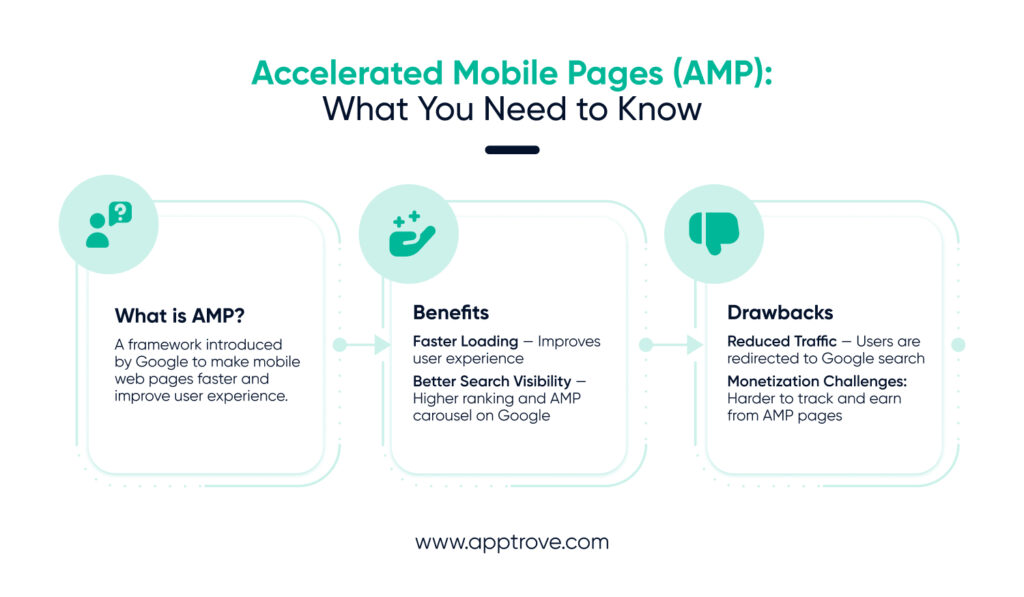What are Accelerated Mobile Pages, or AMP?
AMP (Accelerated Mobile Pages) is a web framework created by Google. They started it in 2016 to make web pages faster and better for users. The main goal of these pages is to boost how pages work. However, some issues have made it difficult for everyone to use it as their preferred method of creating web pages.
They work side by side with normal mobile pages. This means you can often find content in two forms. These two versions link up through a special header tag. GoogleBot (and maybe others later on) uses this tag when it indexes pages.

How do Accelerated Mobile Pages work?
These are designed to avoid common coding issues developers face and is easier for browsers to interpret AMP HTML, hence reducing lags.
These pages are served directly from Google AMP Cache. Google chooses to serve the cached copy of the landing page whenever required to offer faster loading times.
And when Google is not able to serve a cached copy of the landing page, your Accelerated landing page will load from your web server. Although the latter is not the fastest way to load the page, it is considerably faster than traditional non-AMP landing pages.
Why Do AMPs Matter?
AMPs give content makers two main perks:
- Users Have a Better Time as the Pages load faster
- Google Sees You More
In today’s online landscape, slow page loads can push users away. On the other hand, these boost your website’s speed. This helps websites with unoptimized or complex code, as Google has already streamlined the performance.
Even for quick-loading websites, these pages can improve visibility in Google search results. A big plus is showing up in Google’s AMP Carousel often at the top of search pages—for news content supported by big publishers (except Facebook and Apple).
Advantages of AMP
Advertisers: These pages can be utilized for a variety of advertising formats. User experience is not interrupted by ads as the content is loaded asynchronously.
Publishers: Most Publishers benefit from the placement of AMP websites. Mobile optimized websites promise higher usability and contribute to better user signals.
Users: Users can now experience faster load time for pages and will get significant improvement in performance while browsing on slow internet.

AMP Drawbacks
While there are significant benefits, they face criticism in two main areas:
- Less Brand Traffic
- Weak Money-Making Potential
AMP’s setup doesn’t let users stay on the publisher’s site. Instead, it sends visitors back to Google search, which “steals” traffic and makes it hard for brands to track performance.
Making money from these pages is tough too. Less traffic due to redirects means publishers earn less. Many people who used AMP to get noticed on Google later discovered its limitations.
These problems have slowed down the usage of accelerated mobile pages compared to other tech. Though it’s great for user experience and search visibility, accelerated mobile pages face big hurdles to take over the mobile web.
Conclusion
Google introduced this for a faster and better user experience. Though it has some of the most significant benefits, we can not overlook the limitations of this technology. The design of Accelerated mobile pages can reduce website traffic and make the monetization process complicated. This is the core reason why most of the publishers do not prefer AMP.
However, it facilitates websites effectively. But, adopting this very method in the long run is still a debated topic for most web developers and content makers.